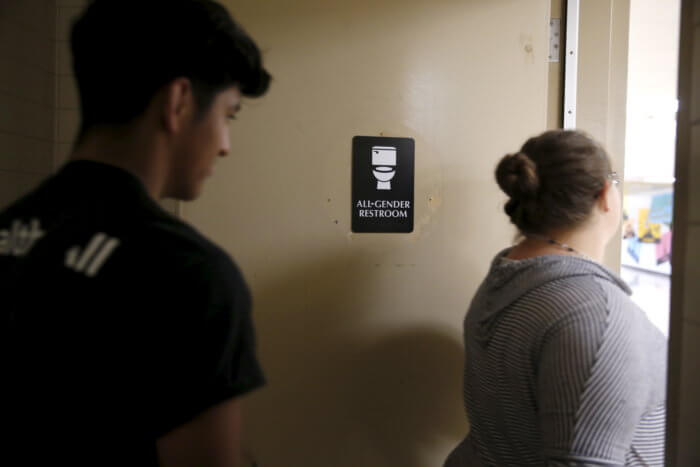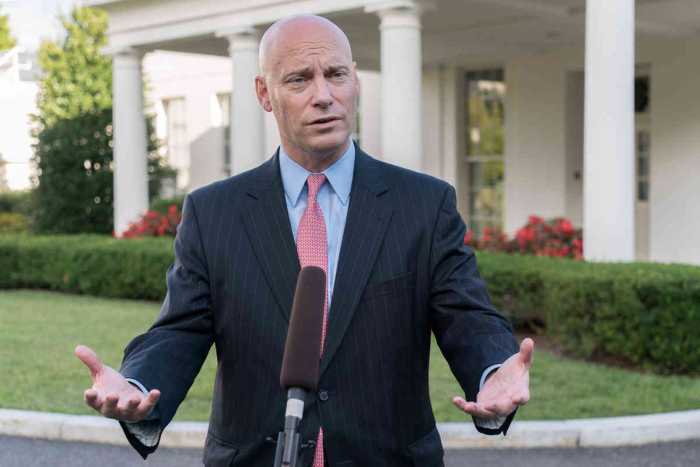An overwhelming majority of LGBTQ students face harassment or assault in schools and most encounter homophobic or transphobic policies in the classroom, according to a sobering nationwide survey that shows American schools are still largely failing to create an inclusive environment for queer students.
The findings, stemming from GLSEN’s 2019 National School Climate Survey, revealed that a staggering 86.3 percent of LGBTQ students reported harassment or assault based on personal characteristics, 68.7 percent said they were verbally harassed on the basis of sexual orientation, 56.9 percent said they were verbally harassed on the basis of gender identity, and 58 percent of LGBTQ students were sexually harassed in the previous year.
Disturbingly, 84 percent of trans students said they felt unsafe at school because of their gender identity, while two out of every five LGBTQ students of color faced bullying or harassment based on their race or ethnicity.
GLSEN report recommends anti-harassment policies, LGBTQ-inclusive curriculum, more GSAs
The survey also found that anti-LGBTQ language has persisted in schools, and students often avoid telling school staff about the mistreatment they face — usually because they do not feel confident administrators will do anything about it.
The survey included answers from 16,713 students ranging from 13 to 21 years old across all 50 states, Washington, DC, Puerto Rico, American Samoa, and Guam.
The survey also showed just how many LGBTQ students have become pawns in the Republican-led effort to prevent students from using the bathroom that aligns with their gender identity. More than a quarter — 28.4 percent — of students said they were unable to use the bathroom consistent with their gender identity.
On a related note, the long-term results of the GLSEN survey, which is conducted every other year, show a correlation between reports of verbal harassment and the policies of the president who is serving in office. Beginning in 2009 — President Barack Obama’s first year in office — reports of verbal harassment started to drop every single year of his time in office. In 2016, Obama posted a guidance directing schools to allow students to use the bathroom that corresponds with their gender identity.
Those numbers plateaued in 2017 — President Donald Trump’s first year in office — and remained stalled in the subsequent 2019 edition of GLSEN’s survey.
The administration’s simultaneous assaults on the LGBTQ community and immigrants have also correlated with worsening conditions for undocumented queer students. Between 2015 and 2017, there was a dip in the number of LGBTQ undocumented students who felt unsafe about their citizenship status, but then there was a huge 20 percent spike between 2017 and 2019.
Furthermore, approximately 80 percent of LGBTQ students of color said in 2019 that they heard racist remarks in the past year — a slight increase from 2017.

Among other key findings, nearly 99 percent of LGBTQ students reported hearing “gay” used in a negative way at school and roughly 45 percent of queer youth reported experiencing some form of cyberbullying, including via text messages or postings on social media.
Not all of the numbers emerging from the survey were discouraging, however. Transphobic language has decreased over the last two years and more students than ever are participating in gay-straight alliances (GSAs), which translates into improvements in school attendance and more participation in community activism.
“For two decades, the National School Climate Survey has been a powerful tool for change. When GLSEN launched the survey in 1999, no research existed that examined the experiences of LGBTQ students across schools nationwide,” GLSEN executive director Eliza Byard said in a written statement. “This biennial survey has provided educators, policymakers, LGBTQ students and advocates with the data and research needed to create safe and inclusive schools for LGBTQ students. We’ve seen significant improvement in the lives of LGBTQ students over the past 20 years, but progress has slowed.”
GLSEN recommends that schools commit to bolstering professional development so there are more staff members and teachers available to assist queer students; implement anti-bullying, anti-harassment policies; get rid of anti-LGBTQ dress codes and bathroom policies; introduce LGBTQ-inclusive curriculum; and bring GSAs to more schools.
“Our research over the past two decades points to clear actions that schools can take to protect students who are facing anti-LGBTQ harassment and other forms of discrimination,” Joseph Kosciw, director of GLSEN’s Research Institute, said in a written statement. “It’s time for each and every school leader to understand the barriers that LGBTQ students face and to commit to making the changes necessary to protect all students, regardless of their sexual orientation, gender identity or gender expression.”
To sign up for the Gay City News email newsletter, visit gaycitynews.com/newsletter.



































